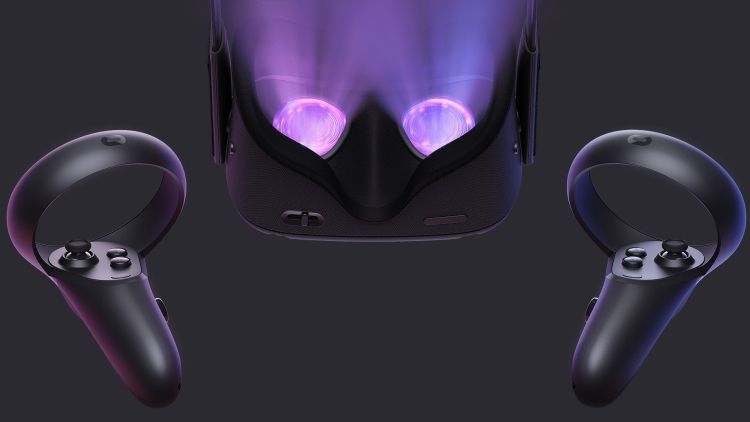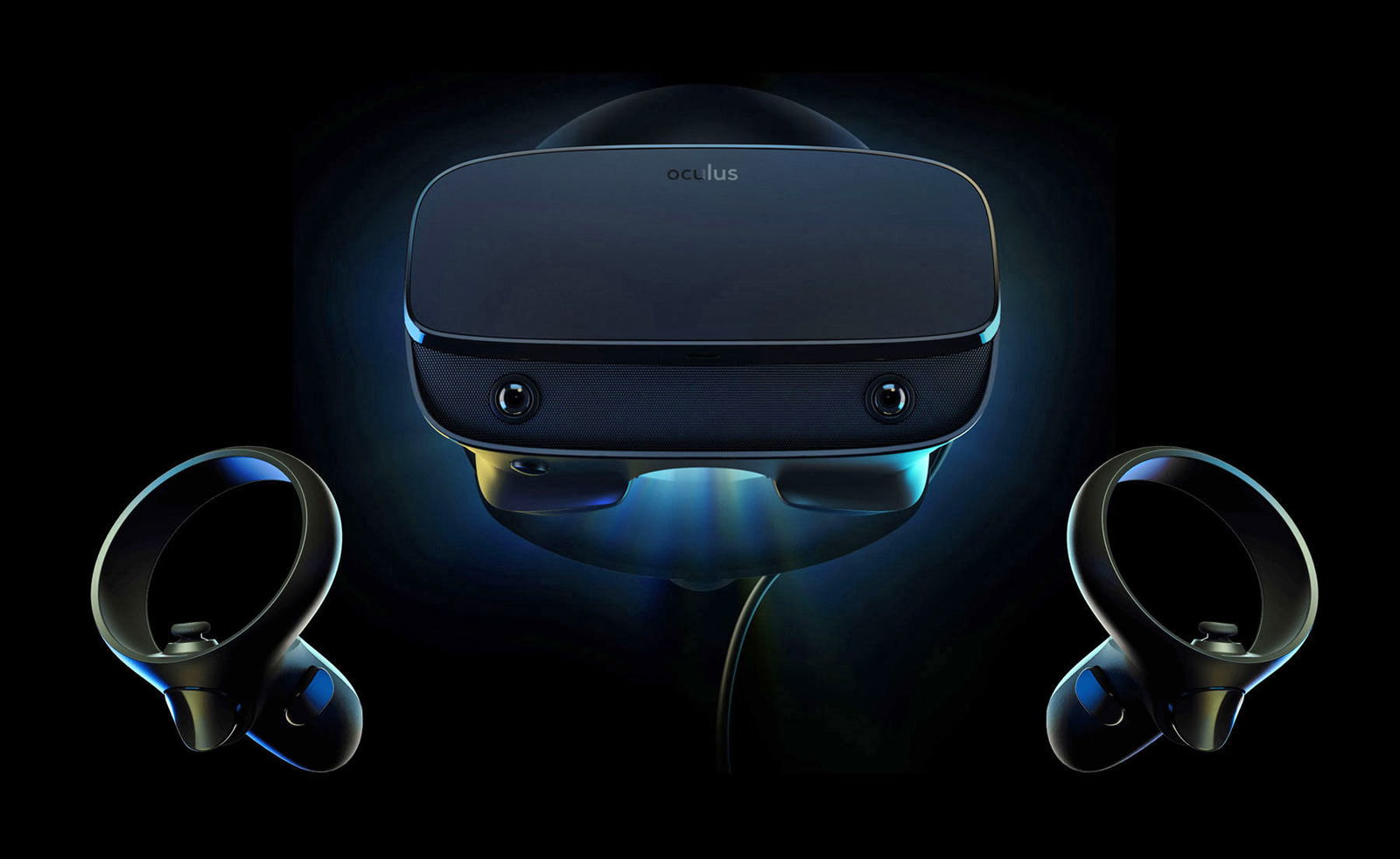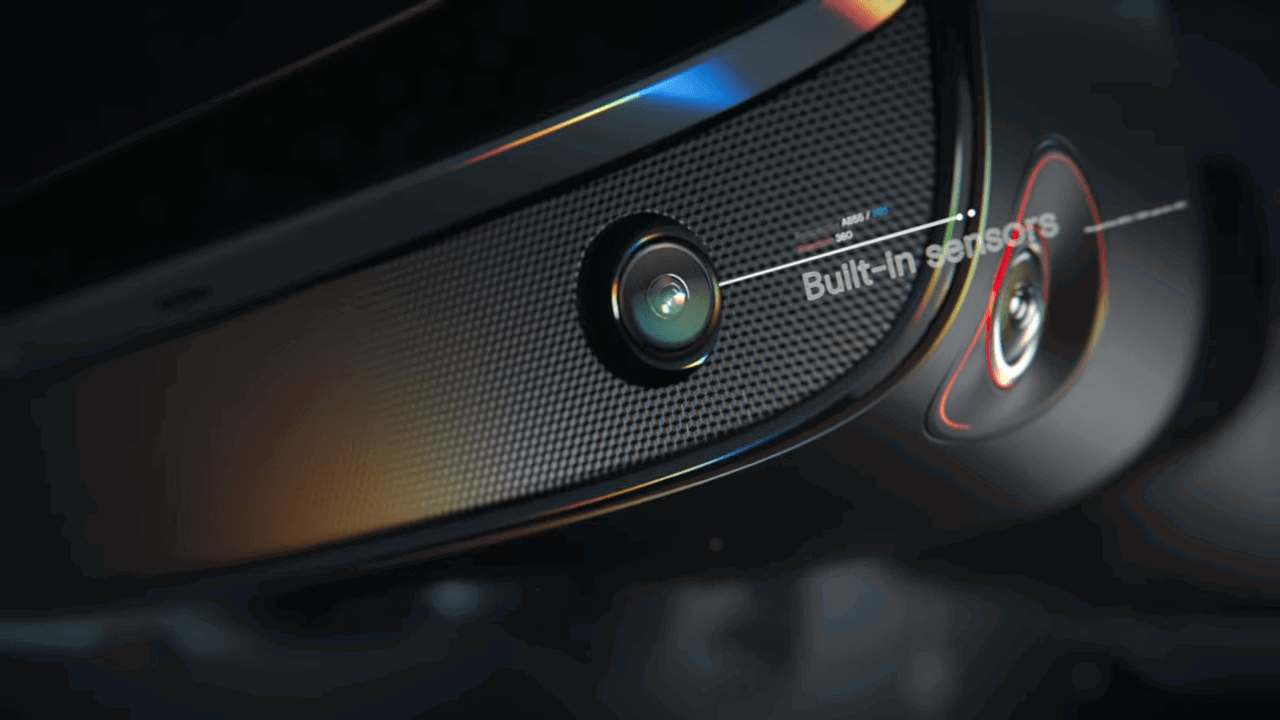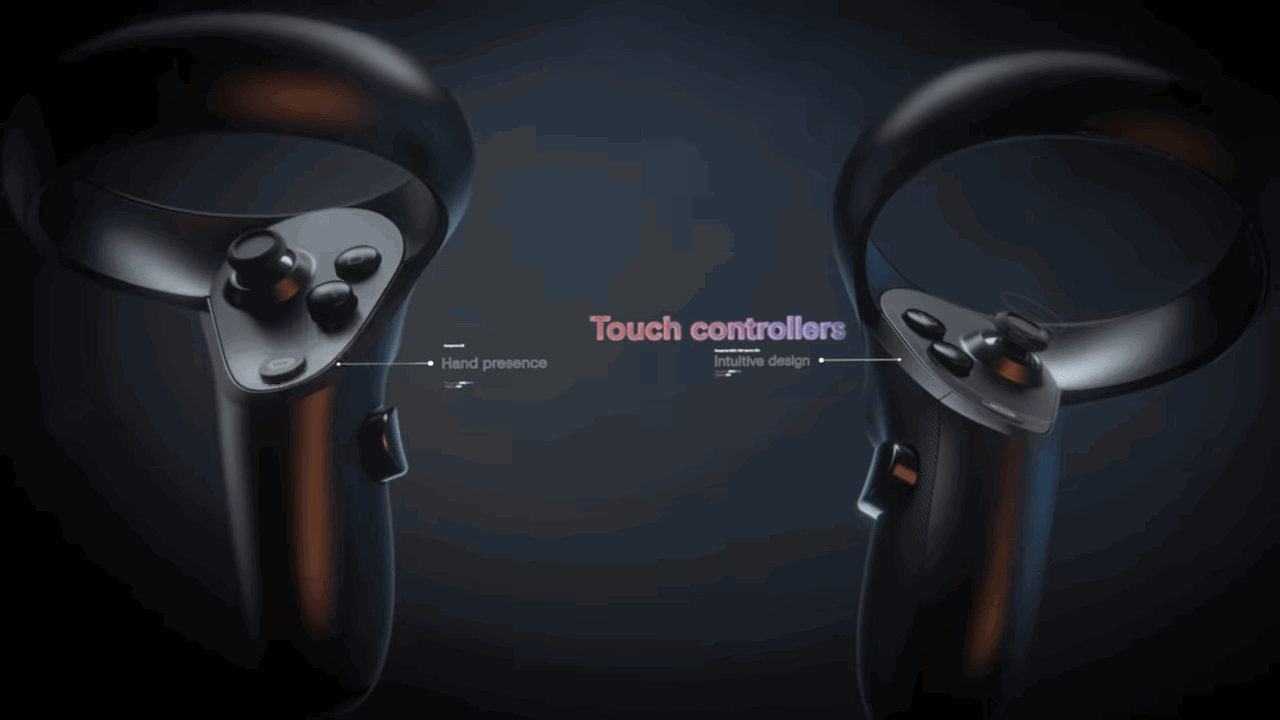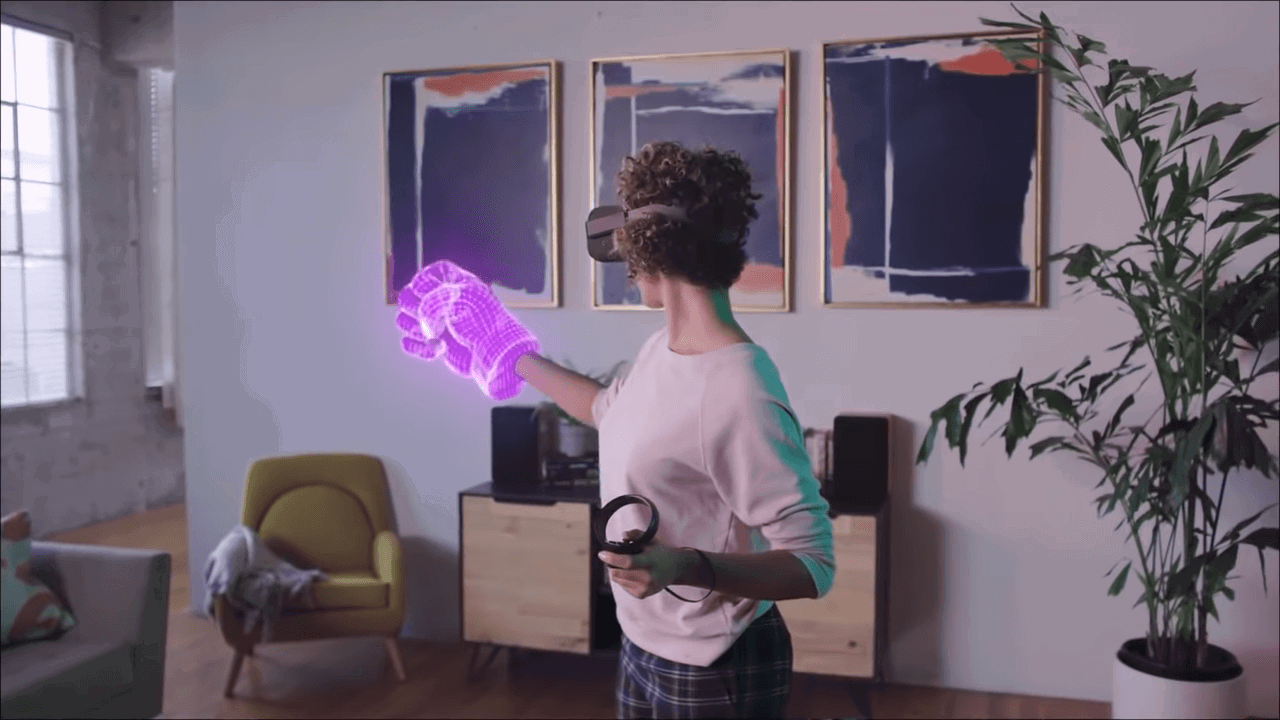The Oculus Rift. The HTC Vive. PlayStation VR.
These three devices have been the core pillars of virtual reality since it entered the video game scene back in 2016. After numerous updates, a few price cuts, and some smash hits from talented teams, VR is not only affordable but worth your time. The days of shelling out upwards of $1,000 for a brand new VR headset are officially behind us. Premium VR devices like the Rift and Vive now run for about the same price as a PS4 Pro or Xbox One X, with the PSVR going for even less than that nowadays, and all three have wonderfully imaginative games and experiences like Beat Saber, Moss, Fallout 4 VR, and Rec Room.
While the current Oculus Rift (which we call the Consumer Version 1, or CV1 for short) is a fantastic piece of hardware, there are better devices on the way. Devices that provide greatly improved functionality while managing to not break the bank. They’re not exactly next-gen, but they’re a huge step up. Say goodbye to tracking cameras and high price tags. Enter Oculus Rift S and Oculus Quest.
Oculus Rift S
While the Rift S is the successor to the CV1, it’s not the Rift 2. Think of it as more of a Rift Slim. It’s a hardware revision that takes the CV1 and makes it sleeker and sexier. Not only that, but there are some pretty neat upgrades under the hood, namely inside out tracking. If you don’t know what inside out tracking is, I don’t blame you, but you should definitely be excited about it. It’s basically magic.
The Rift, Vive, and PSVR all need cameras to track your position while you wear the headset. This results in a bunch of wires (which are another problem with VR, more on that later) and the need for constant recalibration if things get bumped around. Inside out tracking removes the need for those cameras entirely, instead opting to put them on the headset itself. Rather than tracking from the outside looking inward, the Rift S tracks from the inside out. Inside out tracking if you will. Oculus calls their inside out tracking system “Oculus Insight”.
So how does it work? The 5 cameras on the Rift S (2 in the front, 1 on each side, and one on top) scan your environment and create a map of the room, and it uses that in combination with gyroscope and accelerometer inputs from within the headset in order to accurately determine your position. All the Rift S needs to work is to be connected to your PC with one wire (well, one wire that splits into USB and DisplayPort). No more pesky cameras or complicated setups.
There are some pretty significant upgrades tech-wise too. The Rift S has a higher resolution than the CV1, bumping up the pixel count from 1200p per eye to 1440p per eye. The panels are LCD instead of OLED, which means blacks won’t be as dark as they are in the CV1, but the tradeoff gives the Rift S a higher field of view of 115 degrees. The new Fresnel lenses in the Rift S completely eliminate god rays and the “screen door effect”, two visual phenomena that have plagued VR since its inception. The Rift S also features a passthrough camera so you don’t have to exit VR to see your surroundings. Sadly, the Rift S doesn’t have built-in headphones like the CV1, instead opting for a sound system integrated into the head strap. You can plug in your own headphones into the headset’s 3.5mm jack though. Despite all these upgrades, the Rift S is still a CV1 at its core, and it’ll play everything that’s already available for the CV1. There won’t be any games that are exclusively available on the Rift S either.
The Oculus Touch controllers are receiving a minor upgrade with the Rift S. The current controllers have a ring that goes around your hand so the cameras don’t lose sight of the tracking lights. The new Touch controllers are pretty much the same, albeit a bit lighter. The only major difference is that the ring is now on the front of the controllers instead of the back, that way the inside out tracking cameras don’t lose sight of the tracking lights.
Like the CV1, you’ll need a pretty beefy PC to power the Rift S. Luckily, the minimum requirements to enjoy PC VR have come down a lot over the years. You’ll need an Intel i3-6100 or better for your processor, and as far as GPUs go, you’ll need a GTX 960/1050ti or better. Pretty much any decent gaming computer built in the past couple of years should be ready for VR, and if not, it’s just a meager upgrade away.
The Rift S won’t break the bank either. The Oculus Rift CV1 launched at $599 with an extra $99 for the Oculus Touch controllers, but now you can get the whole package for $399. The Rift S is planned to replace the CV1 as the flagship Oculus product, and it’ll keep the same price. That’s right, you can get brand new, top of the line VR hardware for $399, and that’s with the newly redesigned Oculus Touch controllers.
Oculus Quest
Check out or Oculus Quest review here.
Wires are definitely a limiting feature of VR, but they’re a necessity. Being tethered to a PC and feeling a wire attached to your headset might break your immersion every now and then, but it’s the only way to utilize that high-end hardware. The Oculus Quest hopes to change all that.
The Oculus Quest is not a successor to the Rift, but rather a product intended to stand alongside the Rift S. The Quest is a completely standalone wireless VR system. Full 6 degrees of freedom movement, touch controllers, and no wires. Think of the Quest as a VR video game console. It’s fully self-contained, very simple to set up and use, and there are even Oculus exclusive games.
The Quest uses the same Oculus Insight tracking system as the Rift S and uses the same touch controllers. It’s the full Oculus experience in a small package. Of course, being powered by a mobile Snapdragon processor, the Quest won’t have games that look as pretty as those on the Rift S, but games like Superhot and Beat Saber run just fine on the headset. They even got Robo Recall running on the thing somehow. If an Oculus game is on both Rift and Quest, you’ll be able to play it on both, as Oculus has confirmed that games on its store will have cross-buy and cross-play functionality.
Like the Rift S, the Quest will run you $399, and that includes the headset and two Touch controllers. You’ll probably get some games with it (the Rift CV1 came bundled with multiple games and the Touch controllers came with even more), but Oculus has been pretty tight-lipped on games as of yet. We don’t even know the full launch lineup yet. There will be 50 games on Quest at launch, and only about 30 or so have been confirmed.
Because you’re not tethered to a PC, you have a lot more freedom to move around wearing a Quest, meaning you’re more likely to bump into something. Oculus has you covered, because another feature of Oculus Insight is multi-room guardian. The guardian system is a sort of virtual cage you can draw around yourself that outlines the walls in your room, and they’ll show up in VR if you get too close. The Quest can store guardian configurations for different rooms, so you can take the Quest to your living room and not have to worry about setting it up every time.
Being a standalone device, Quest users have to worry about two things Rift users don’t: storage and battery. The Quest will be available in 64GB and 128GB models, with the 128GB costing $100 extra. There is no expandable storage on the Quest, so you’ll have to make do with what you’ve got. As far as battery life, there isn’t a concrete number of hours you can get on a single charge, but there are reports ranging from 2 hours all the way up to 8. Naturally, battery life will be dependent on what you use the Quest for (hardcore gaming eats up way more battery than watching movies), and there may be battery packs that allow you to play as you charge.
In terms of games available, it’s likely that the majority of VR titles out there will make their way to Quest eventually. The only exceptions are graphically intensive games like Insomniac’s Stormland, an upcoming Oculus exclusive. That doesn’t mean there won’t be good-looking games on Quest though. Moss, Creed: Rise to Glory, and Vader Immortal: A Star Wars VR Series will all be available on Quest at launch.
So When Can I Buy Them?
So far the release window for both the Rift S and the Quest is “Spring 2019”. That hasn’t changed since the headsets were unveiled, and spring is almost over, so expect both soon. Very soon.
There’s been heavy speculation that both devices are launching on April 30 at Facebook’s F8 event. There is a precedent for them doing this. The Oculus Go, a cheaper standalone Oculus device intended for movies and entertainment, did not receive a concrete release date until it was surprise released during the Oculus keynote at last year’s F8 event. There is a strong possibility that both the Rift S and Quest will be on store shelves very soon. At the very least, expect a release date to be announced at F8.
UPDATE: Both devices are now available for pre-order with a release date of May 21, 2019. You can snag them from the official Oculus website.
Trailers


